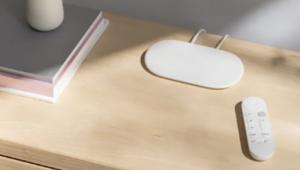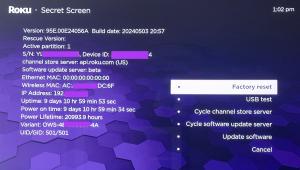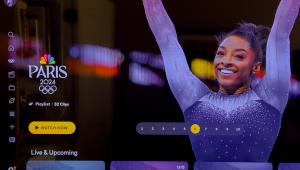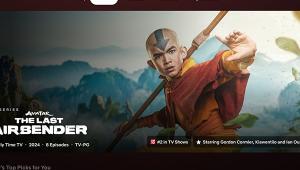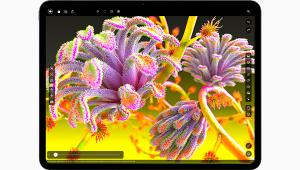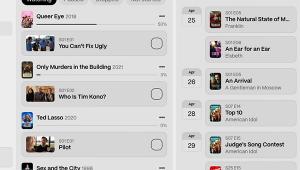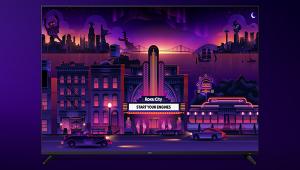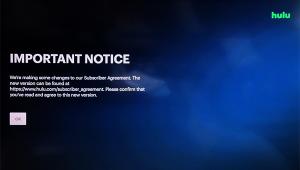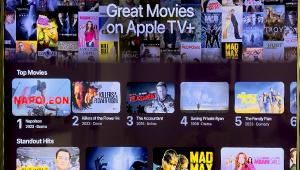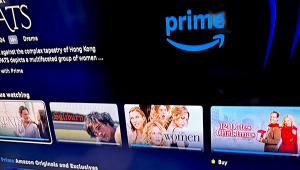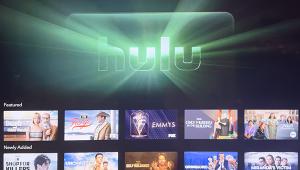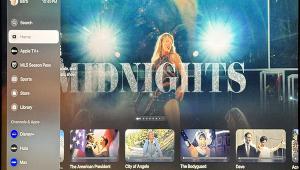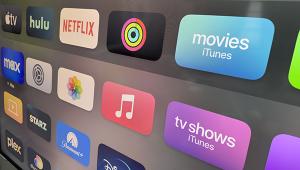NVIDIA Shield Review - 4K Streaming for Android TV

As with most Google devices, setup is made easier with a Google account. Logging in let me access my Google Play Music subscription, purchased and rented movies and TV shows, and my subscriptions and playlists on YouTube.
Although the Shield is an Android TV, its designed for gaming and has settings that let the user choose the performance of the display for gaming similar to the adjustments that can be made with an NVIDIA video card for a PC. It comes with a wireless game controller. The controller is a typical video game controller with two joysticks, a navigation rocker, dual triggers and the A, B, X, and Y buttons. The green logo triangle pairs the controller to the Shield. Additional touch “buttons” bring up the home screen. A back and forward arrow to move through menus. The bottom section of the controller is a touch volume button that works by sliding a finger up or down. What struck me about the game controller was how well balanced and comfortable it was in my hand(s).
A remote control is optional ($49) or can be added as part of a bundle. Both the controller and the remote are rechargeable using a micro USB cable. The remote had to be charged before use and because I only had it plugged in for about an hour, the charge lasted for just a few days before requiring a recharge. The remote is small with few button. A navigation circle surrounds the select key that sits above the back arrow and the home screen circle button. A cool feature of the remote is that the center channel is not just a design, but the Shield’s output volume can be controlled by sliding a finger up or down.
Pushing the microphone button on the remote allows for instant search and basic commands like launching apps. (Search is done on the game controller by navigating to the search microphone onscreen and using the mic in the controller.) Search worked well and displayed results primarily from the Google Play store, but also in other apps. Hulu and Sling TV results displayed when a title was available in those apps as well.
The remote and controller work well enough. However, it’s less than ideal for media playback. To play, pause, rewind or fast forward required pressing down on the navigation wheel to display onscreen controls. Fast forward and rewind did not display thumbnails to locate a scene. Simple playback buttons on the remote or controller would be a welcome addition.
Pressing the logo button on the controller, or the circle button on the remote wakes the Shield. With HDMI CEC turned on, the Shield turned on the TV and home theater receiver, switching to correct inputs every time.
The menu layout is the same for stand-alone Android TVs—the Nexus Player and the Shield. It displays on top of the last content you were watching. When watching a video on Crackle, I pressed the home screen button. Because I hadn’t paused the video, it continued to play behind the home menu. The home menu takes up most of the screen so I couldn’t see much of what was currently playing in the background, but I could hear the dialog.
The initial carousel displays recommended videos and music as well as recently used apps. When I rented Insurgent the cover art appeared in the first place (far left) of the carousel. Other movies I bought appeared next to it. After playing music on Google Play, the album cover, artist and song name appeared in the first box so I could quickly return to what I was listening to.
Video recommendations come from a variety of installed apps. Difficult People was recommended on Hulu Plus, Sling TV, Wolf of Wall Street on Epix. Several popular videos from YouTube, some (obviously promoted) TV shows from Crackle, and a couple of movies from my Plex library also appeared in the home screen carousel. I’m not sure what algorithm was used for recommended movies and videos other than popularity or new original video programming on Crackle and Hulu. Perhaps it will understand my viewing habits better when I’ve used it for more than a month.
Below the recommendations is the NVIDIA Hub with a link to Stream Games, Download Games and Netflix. The grid of all installed apps is below the Hub.
Content
Google Play apps—Google Music, Google Movies and TV, Google Photos and Videos, YouTube and the Google Store—are preloaded on the Shield. Netflix and Plex are the only non-Google apps. The number of Android TV apps available in the Google Play store is growing. Unlike Google TV, Hulu is available (including the stand-alone Showtime subscription). The Travel Channel, Food Channel, and Sling Television are free to install. Google has announced that Vudu, HBO Now and HBO Go will soon be available.
Plex is one way to view the downloaded photos and videos in your personal media library and the easiest way to access media libraries saved to computers and other sources on a home network. Connecting a USB stick or hard drive with my saved media to one of the two USB ports was easier and the picture quality was amazing. Using the “photos and video” app, the photos and movies are displayed in a grid. There is not a file list feature with names which is awkward for movies. Instead a random still from the movie is displayed. This could be remedied if you save movies together in a folder with the metadata including the cover art.
Android TVs include Google Cast, which acts in the same way as Chromecast. Chromecast enabled phone or tablet apps can play on the Shield and be controlled by the mobile device. It can also be moved to another Chromecast enabled device for continued playback.
Android phones and tablets cannot mirror their screens to an Android TV as they can in Miracast-enabled devices. A beta allowed me to mirror from my Samsung Galaxy phone with Android Lollipop version 5 using the phone’s Chromecast app. It took a while for artifacts to disappear and for video playback to settle, but it was possible to mirror the phone.
While my focus is on video and music streaming, the gaming aspect of the Shield cannot be ignored. Most of the games available are older versions of some including Portal, Half Life 2 andDoom 3 BFG edition. Some highly anticipated games are announced as “coming soon” including Borderlands—the Prequel. For PC users with NVIDIA video cards, there is an option to stream games from the PC to the Shield.
Performance
The Shield would be just another media player if it weren’t for its amazing picture and sound quality. It’s not surprising given that NVIDIA is known for its video cards for better display performance. The Shield is the first media playing device that can transfer 4K video to a UHD TV via HDMI 2.0. Initially, only Netflix and YouTube has 4K content that can play through the Shield. Any content, both video and stills looked stunning on my 4K Samsung TV.
Both 7.1 and 5.1 surround sound are supported. It also can handle high-res audio playback at 24bit/192 kHz. Currently there are no streaming music apps on Android TV to take advantage of the high-res audio, however, music on a connected USB can playback in high quality.
There was a small hiccup in performance using the Plex app. When scrolling left or right, the display would jitter and return to a title where I had stopped earlier. This made it difficult, yet not impossible to navigate. The problem is most likely in the Plex app and will probably be resolved in future updates.
Final Thoughts
If the Shield had Amazon Instant Video (it’s unlikely that it will ever be on Android TV), I would probably switch to using it over other players because of its beautiful picture and sound quality. I often use it for Netflix to watch the UHD content. The basic model runs $200 for a 16GB memory unit. For anyone who is a gamer, the Shield may not replace other game counsels but can certainly be a fun addition. I must confess I enjoyed playing a few games for fun while reviewing the Shield. I’d recommend the $300 500GB model for gamers that want to download and play games directly on the Shield.
- Log in or register to post comments
